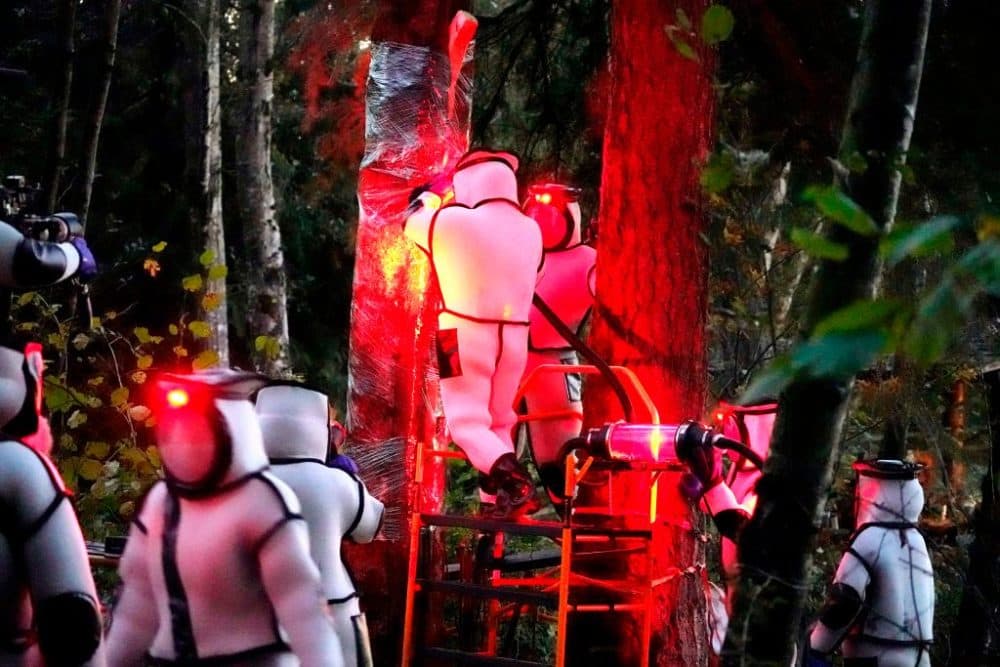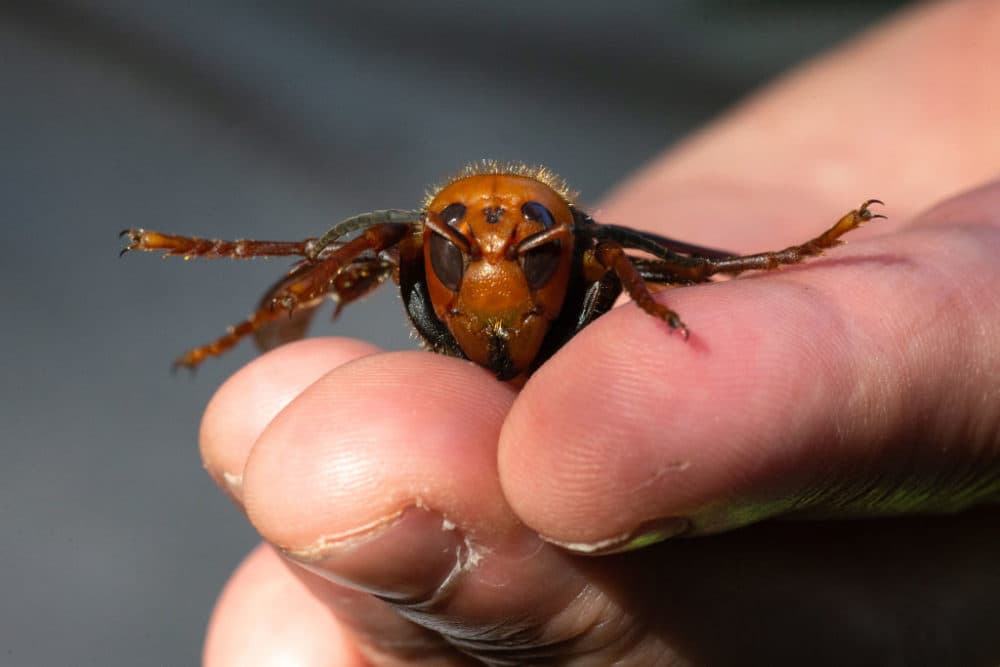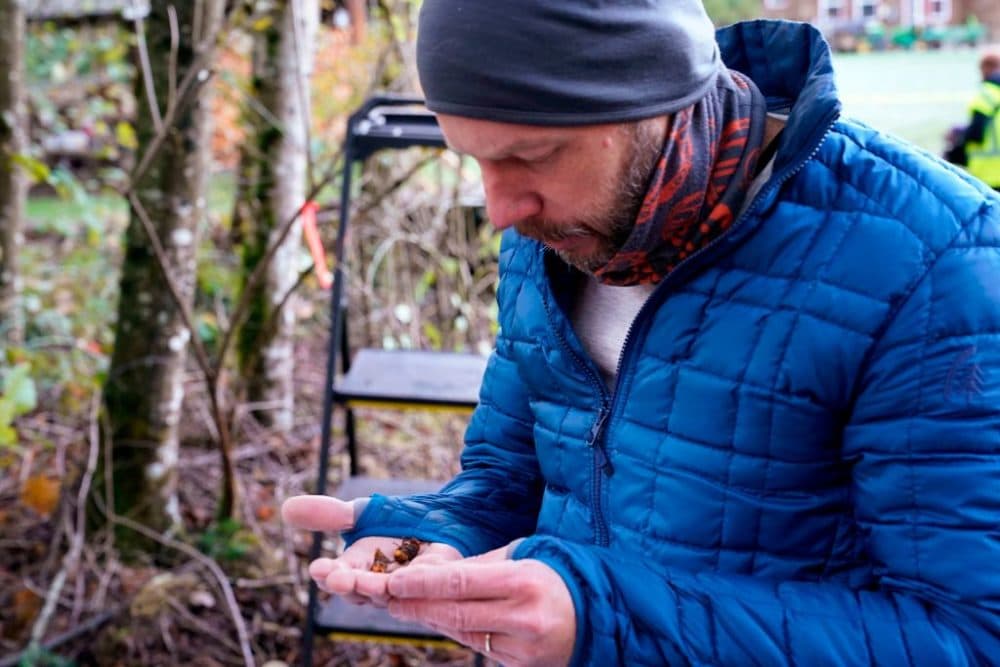Advertisement
Scientists Find And Destroy Giant Murder Hornet Nest In Washington State

Murder hornets, officially known as Vespa mandarinia, have arrived in the U.S., and they're probably multiplying.
In Washington state, scientists recently found and destroyed the first nest of the Asian giant hornets. They discovered 200 queens inside that could have left the nest to start their own colonies — before the team of entomologists stopped them just in the nick of time.
The hornets are an invasive species that can destroy honeybee populations, and were first spotted last year in British Columbia.

Chris Looney, an entomologist with the Washington State Department of Agriculture, says he and his team put a radio tag on a wasp to track its movements through the woods. They expected to find hornets nesting on the ground, where they commonly set up camp, but actually found the nest in a tree, he says.
“A few days later, we .... blocked off all the places the walls could possibly get out except for one small hole, and then we harassed the nest by banging on it and vacuuming out the workers as they emerged to defend themselves,” Looney says. “Once that happened, we were able to seal the nest back up with spray foam, cut the tree down and then take it to a quarantine facility, where we opened it in a cold room.”
What they discovered was a well-developed hornets’ nest. Looney says it appeared like several paper wasp nests — exposed combs with larvae inside, stacked on top of one another — safely ensconced in a tree. He says the nest was crawling with virgin queens, worker wasps and around 100 pupae waiting to emerge, some of them chewing their way out as Looney and his team worked.
Looney says a few hornets might have escaped before they found the nest. Around late fall, the next generation of queens emerges and remains in the nest for a few days after they pupate.
Advertisement

“Mating is relatively low in this species,” he says. “Only 30%, maybe, mate. … They have to fly off and successfully hibernate. They have to not die over the winter, or they have to wake up in the spring and get enough food [and] start to nest. So even if, say, a handful of queens emerged, the chances of any one of them being able to start a nest are very, very low.”
But that likelihood would have increased if Looney and his team had failed to find the nest and all of those potential queens had flown away.
While so-called murder hornets are dangerous to humans and can cause deaths, Looney says “we should be concerned about it primarily because we're worried about its impact on cultivated honeybees and any unpredictable impacts might have on the ecosystem.”
The name “murder hornet” skyrocketed into popularity after a viral article in The New York Times discussed the threat the Asian giant hornet posed to bee populations in the U.S.
“I think the name is kind of funny myself, because it's ridiculous,” Looney says.
Julia Corcoran produced and edited this interview for broadcast with Tinku Ray. Elie Levine adapted it for the web.
This segment aired on November 12, 2020.
